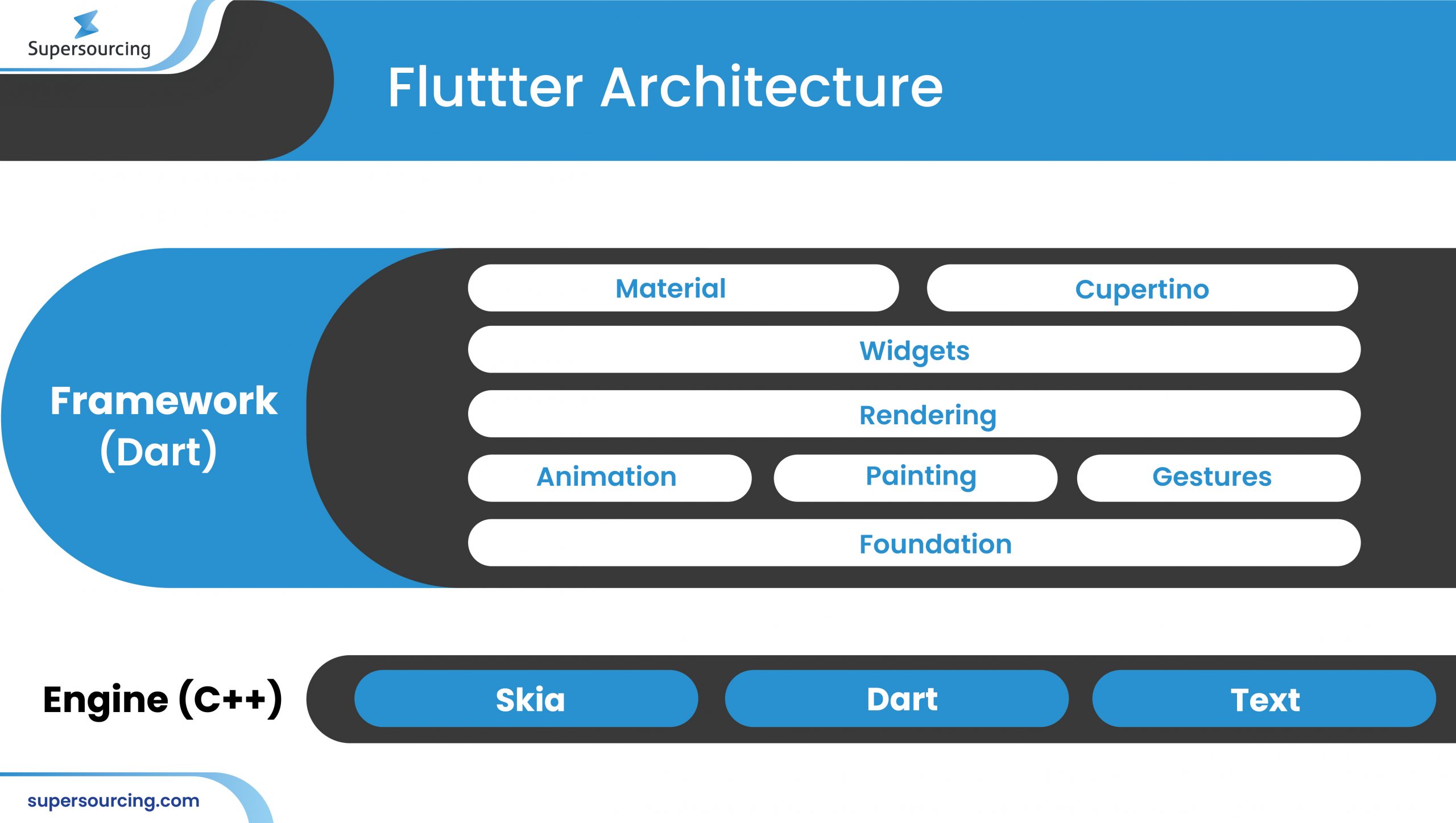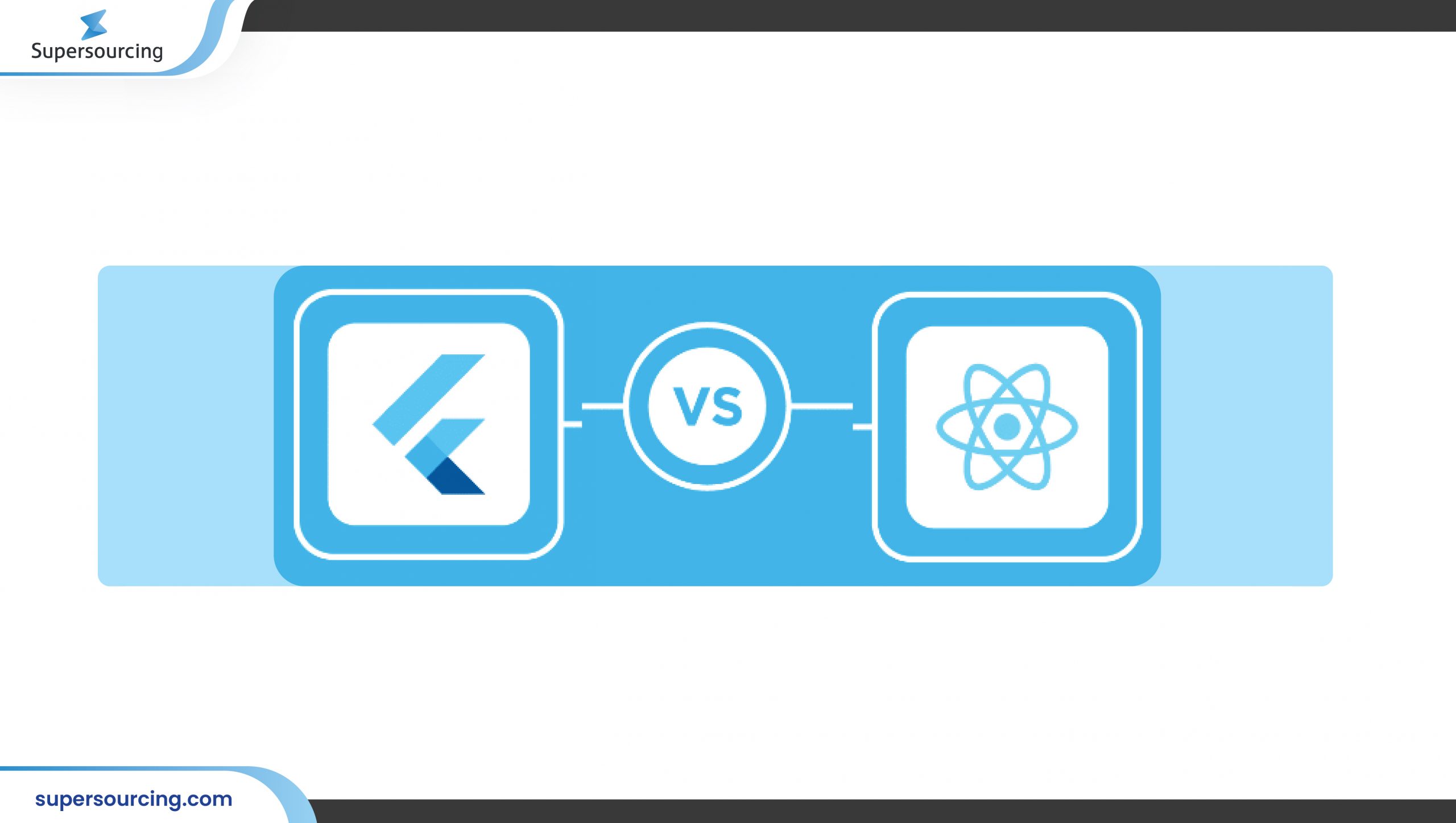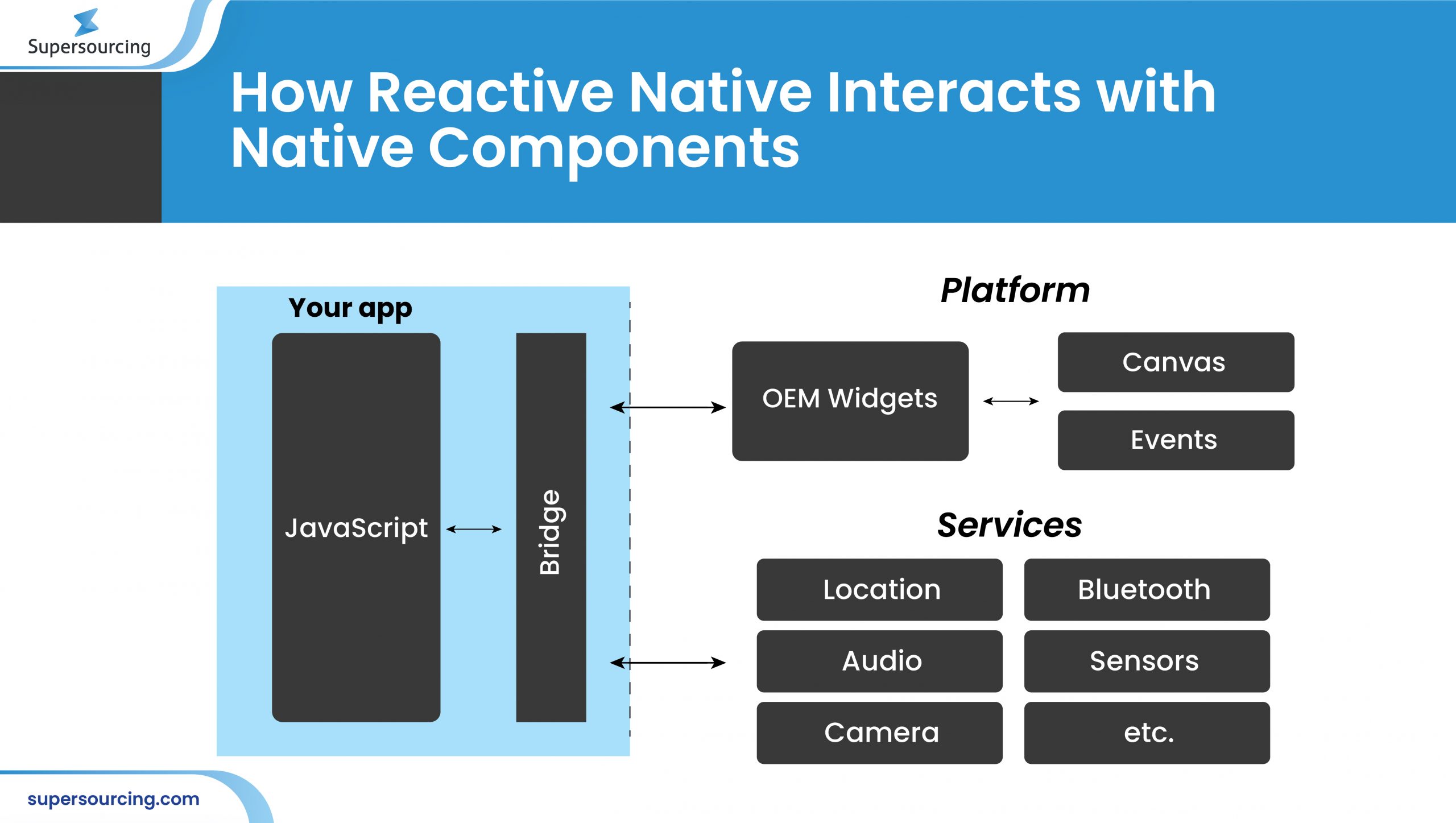Table of content
Developing mobile applications has already been a central cornerstone
of the software sector, but providing many channels on which various
apps must be created has long been a problem. Aside from needing to
manage two teams, one for Android and one for iOS, there is still a wide
gap between the apps produced. As they are created by completely
separate teams. That is what sparked the concept of developing
cross-platform smartphone apps. This arises a competition between
learning about React Native Vs. Flutter to build the mobile
application.</span >
Although being two related aspects of cross-platform app development,
React Native and Flutter are often hailed as fierce rivals. Both assist
developers in minimizing Time to Market (TTM) in providing immersive
enterprise software to customers and thereby improving efficiency.
Today, we uncover the winner of the tug war between React Native Vs
Flutter.</span >
What is React Native?</strong >
focuses on native application rendering that is primarily compliant with
Android and iOS. React Native is written in a hybrid of XML-Esque markup
and JavaScript, also known as JSX. It is sponsored by the social network
behemoth Facebook, and over 50 committed developers are already
operating on the framework.</span >

What is Flutter?
Flutter is an open-source platform that works for </span >Google’s Dart</span >
programming language. It is widely referred to as an upgraded UI toolkit
that is used to build cross-platform frameworks from a single codebase.
Flutter makes it possible to build expressive and scalable UI with native
results. It is also funded and contributed to by a team of Google
engineers as well as the entire Flutter culture.</span >
React Native Vs Flutter: Which One is better?
One of the most important facets of smartphone and web app growth is
project completion on schedule. Both React Native and Flutter are
cross-platform, which cuts time to market. Furthermore, their third-party
libraries and fully prepared components make using them to create your app
more effective.</span >
Flutter and React Native have more than just rapid development; they may
also reduce project costs. Here is a detailed comparison of </span >React Native vs Flutter.
| React Native</span > | Flutter</span > |
| React Native is a framework for building native applications using React.</span > |
Flutter is a portable UI toolkit for creating natively compiled apps from a single codebase.</span > |
| React Native was released in March 2015 at F8 Conference.</span > | Flutter was released in December 2018 at Google I/O.</span > |
| Native development was done by Facebook.</span > | Flutter was developed by Google.</span > |
| React Native is free and open source.</span > | Flutter is also free and open source.</span > |
| The programming language for React Native is JavaScript.</span > | The programming language for Flutter is Dart.</span > |
| It has a popularity of 83,200 stars on </span >Github</span > as of December 2019. | It has a popularity of 81,200 Stars on Github as of December 2019.</span > |
| Application components have the same appearance as native components. </span >Since React Native uses native components under the hood, you should be certain that your app’s components will be immediately updated after every OS UI update. </span > Having said that, this may cause the app’s UI to split, although |
Flutter applications look almost as fantastic on new operating systems as they do on older ones. </span >Since they share a single codebase, the applications look and function like on iOS and Android, but due to Material Design and Cupertino widgets, they can also mimic the platform architecture.</span > Flutter provides two collections of widgets that adhere to unique This ensures that the Flutter app can appear and act naturally on |
| React Native is available on iOS and Android; however, there are a few libraries that permit you to compose the same code for iOS, Android, mobile, and Windows10 applications.</span >You may also remove shared code from mobile, desktop, and web applications to a separate directory, handle it as a separate project and inject it like every other dependence. This encourages a developer to concentrate on writing programming for a single platform without needing to worry about compatibility with others.</span > |
Flutter is only available on iOS and Android, although the long-term goal is to have an optimized solution that enables developers to compose one code for both desktop and tablet, as well as online.</span >Flutter for Web help is now accessible as a software demo, but it is not yet an alpha platform. Where it comes to creating desktop applications with Flutter, APIs are only in the early stages of production and would most likely be launched later on.</span > |
| Applications made with React Native include Instagram, </span >Skype</span >, Facebook and Facebook Ads, and Tesla.</span > | Applications made with Flutter include Xianyu, </span >Hamilton Musical</span >, and Google Ads. |
Who wins – React Native or Flutter? Well, there is no clear winner, but
to escape the dilemma of choosing one, here are some things you need to
consider before making a choice.</span >
- Do the developers understand Dart? If so, programming with Flutter
would be a piece of cake.</span > - Are the programmers well-versed in JavaScript? If so, React Native
tends to be the best choice.</span > - Want to build the UI for your app using native UI components? If so,
pick React Native.</span > - Is brand-first design important to you? If so, then Flutter is a good
match.</span >
Deployment with Flutter
Here is how to use the Flutter application on both Android and iOS
platforms for </span >app deployment.
1. Application for Android
Using the android:label entry in the android manifest format, you must
change the name of the program. Android app manifest file,
AndroidManifest.xml is stored in </span ><app dir>/android/app/src/main</span ></i >.
It includes all of the knowledge for an Android program. Using the
android:label entry, we can specify the name of the program.</span >
Using the android:icon entry in the manifest file, you can change the
launcher icon.</span >
As required, sign the app using the standard alternative.</span >
If required, allow Proguard and Obfuscation using the standard
choices.</span >
Run the following command to generate a release APK file: </span >cd /path/to/my/application
Flutter build apk
Using the command Flutter install, install the APK on a computer.</span >
Create an app bundle and drive it into </span >Google Play</span >
utilizing traditional methods to publish the program.</span >
2. Application for iOS
Using the regular form, register the iOS software in App Store Connect.
Hold the =Bundle ID you used to register the application.</span >
To set the application name, change the Show name setting in the XCode
project settings.</span >
To set the package id, update Bundle Identifier in the XCode project
settings.</span >
Use the standard method to code signs as required.</span >
Using the standard method, add a new app icon if required.</span >
Using the command </span >Flutter build iOS</i >, create an IPA file.
Test the program by dragging the IPA file into TestFlight using the
regular form.</span >
Finally, use the traditional form to publish the software to the App
Store.</span >
Deployment with Native App
To publish your Expo software, first, ensure that all of your app.json
settings are in place.</span >
You may add as many properties as you like, but only three are
required:</span >
- name: The name of your software when it exists both
inside Expo and as a separate app on your home screen.</span > - slug: The posting URL slug. For e.g., “app-name”
refers to the project </span >expo.io/@username/app-name.</i > - sdkVersion: The Expo sdkVersion that will be used to
execute the project. This should correspond to the version number
listed in your package .json is a kind of data structure.</span >
If the app is ready and the settings are in place, proceed as
follows:</span >
- To publish your idea, in Expo Dev Tools, click the Publish tab. If
you’re using the command line, select “expo publish.”</span > - You will be given a path (example: expo.io/@username/app-name) to a
page where two versions of the code for iOS and Android will be
created.</span > - Any time you upgrade the software, you must republish it, and the
updates will be mirrored immediately and made accessible to your
customers.</span >
React Native Vs Flutter: Software Upgrade or Innovation Flutter or
Native?</strong >
Deciding whether you want to go with Flutter or Native can be a tough
decision. Let’s break it down for you.</span >
Avoid having Native technologies if you want to:</span >
- Avoid a high upfront cost to get the app to market fast.</span >
- Create apps with a small or inexperienced development team.</span >
- Avoid an exponential increase in repair and repair costs.</span >
- Workaround by providing consumers with a native version with fewer
in-app payment options.</span > - Avoid the growth of global application compatibility and the problems
that come with it.</span >
Avoid having </span >Flutter</span > if you want to:
- Create Native applications with no UI or physical constraints.</span >
- Priority should be given to Native efficiency and functionality over
creative designs.</span > - Create a brand or feature-specific application for a stand-alone
enterprise.</span > - Create mobile applications using a well-defined model standard or the
widely used
MVP</a >, MVC, and MVVM architectures.</span > - Since Flutter has several layers of abstraction, you may avoid the
time-consuming task of error-fixing.</span >
React Native Vs Flutter: Advantages and Disadvantages
Everything comes with its own advantages and disadvantages. Here are some
of the key pros and cons of Flutter and </span >React Native</span > to know.
| Advantages of Flutter</span ></span > | Disadvantages of Flutter</span ></span > |
| The compatibility with Dart, a language that was conceived from the very beginning as a tool for creating client apps, optimized and tailored for user interface development.</span > |
Flutter has a limited set of tools and libraries. It is a software creation tool for cross-platform use. However, many Flutter functions are in Alpha and Beta Testing and do not necessarily work correctly.</span > |
| Flutter has a growing popularity. It has surpassed React Native in both GitHub and Stack Overflow.</span > |
There is a massive file size. The Flutter app is 4 MB; on other platforms, it has a weight of 500 KB.</span > |
| It is extremely quick and gives high-performance applications. Therefore, Flutter apps are compiled into machine code utilizing the graphics and visualization engine integrated into C/C++.</span > |
Flutter lacks password manager support. Autocomplete input fields are actually causing issues in Flutter applications. This is particularly evident if you need to remove passwords from built-in or third-party password managers.</span > |
| Advantages of React Native</span ></span > | Disadvantages of React Native</span ></span > |
| The mobile app can be created using web technologies, which allows any web developer to quickly improve his or her expertise and build React applications.</span > |
One significant disadvantage of JavaScript is that it does not accept decimals. However, this could trigger significant issues for mobile applications that use some kind of computation.</span > |
| The same building blocks that are used in iOS and Android apps are often used in React Native-based apps. Therefore, implying that React Native is a web platform that collates app components for native mobile devices in JavaScript.</span > |
Businesses that need Type A protection, such as banking apps or finance management apps, will need to take extra precautions.</span > |
| Building smartphone applications on various channels saves time and money.</span > |
The platform’s patent rights are still a little hazy.</span > |
React Native Vs Flutter: Conclusion</strong >
vs Flutter
is that you should select Flutter if your budget is small or you need to
create a small application quickly. You may even create a Flutter
program if the user interface is important to your app. However, if your
budget is ample, and you choose to build a complex app, React Native is
the way to go.</span >To get along with this confusion on choosing the right platform and the
right
development agency
for your app development, </span >Supersourcing</span >
will be the most appropriate platform. However, we are a team of
dedicated and responsible agencies, that supports all the clients and
registered agencies to get the perfect match. Just </span >share your business idea here</span >
and in a few hours you are going to receive loads of agency options to
build your wonderful
business solution</a >.


